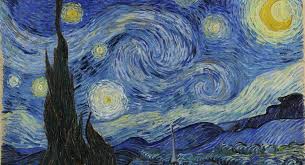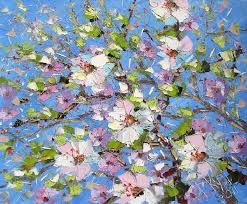LENINGRAD SCHOOL OF PAINTING (part 3)
 And how to explain such a change of state to “left” art, whose representatives continued to occupy key posts in all the organs of this state, which were in charge of art issues in the center and in the localities?
And how to explain such a change of state to “left” art, whose representatives continued to occupy key posts in all the organs of this state, which were in charge of art issues in the center and in the localities?
Among the supporters of the “left” views, the artists D.P. Sternberg, A.D. Drevin, V.E. Tatlin, V.V. Kandinsky, K.S. Malevich, O.V. Rozanova, M.V. Matyushin, stood out N.I. Altman and others. They formed a rather strong group, which initially determined the artistic policy of the Department of Fine Arts created under the People’s Commissariat for Education, as well as the Moscow and Petrograd Soviets.
They, in turn, were opposed by those who saw the danger of a break with the traditions of progressive pre-revolutionary art and the art school. Such positions were mainly representatives of Russian realistic art, who began their career before the revolution and in large part, in contrast to the “left”, who at first boycotted the new government.
The formation of the two camps, whose supporters were largely diametrically opposed, left a characteristic imprint on the development of art and art education in the 1920s. In such an atmosphere of ongoing polemics and struggles of various creative directions, the formation of the Soviet art school proceeded.
During the transformations of the first post-revolutionary years, it seemed that the old, conservative at the Academy of Arts, that which, being criticized for half a century, nevertheless, was invariably preserved and successfully adapted to changing conditions, was overcome.
However, another danger soon arose. It was associated with the weakening of the educational process, the advent of random people in teaching and training artists, with the substitution of methodological, professional work for a demagogic pseudo-revolutionary phrase. Under the pressure of demagogues and amateurs, the foundations of the art school were rapidly collapsing. Neglect of professionalism, systematic study of the artist’s craft and the development of the artistic heritage were openly cultivated.
Experienced best cadres of teachers who opposed pseudo-revolutionary innovations were expelled from the Academy of Arts. Not only the old academic art, but also realistic art in general was subjected to defamation and denial. Formalist art in its various manifestations rose to the shield. The apotheosis of this policy was the notorious period in the history of the Academy of Arts, when F. A. Maslov, who received the name “Maslovism”, was appointed its director.
In addition to the “left” wing, the teachers who continued to pass the classical training system, A. I. Savinov, A. A. Rylov, D. N. Kardovsky, L. N. Benois, P. A., continued to teach in the walls of the former Academy. Shillingovsky, D.I. Mitrokhin, E.E. Lansere, V.M. Konashevich, I.A. Fomin, V.V. Lishev. The first attempt to restore the former principles of instruction was made in 1921-1922, which was negatively perceived by some professors, headed by K. S. Petrov-Vodkin, Vice-Rector for Academic Affairs. The situation began to improve in 1924, when work on curriculum compilation for the faculty of painting lay on the shoulders of A. I. Savinov, who became chairman of the subject commission on art. His efforts were supported by the new rector E.E. Essen and dean of the faculty of painting V.V. Belyaev.




